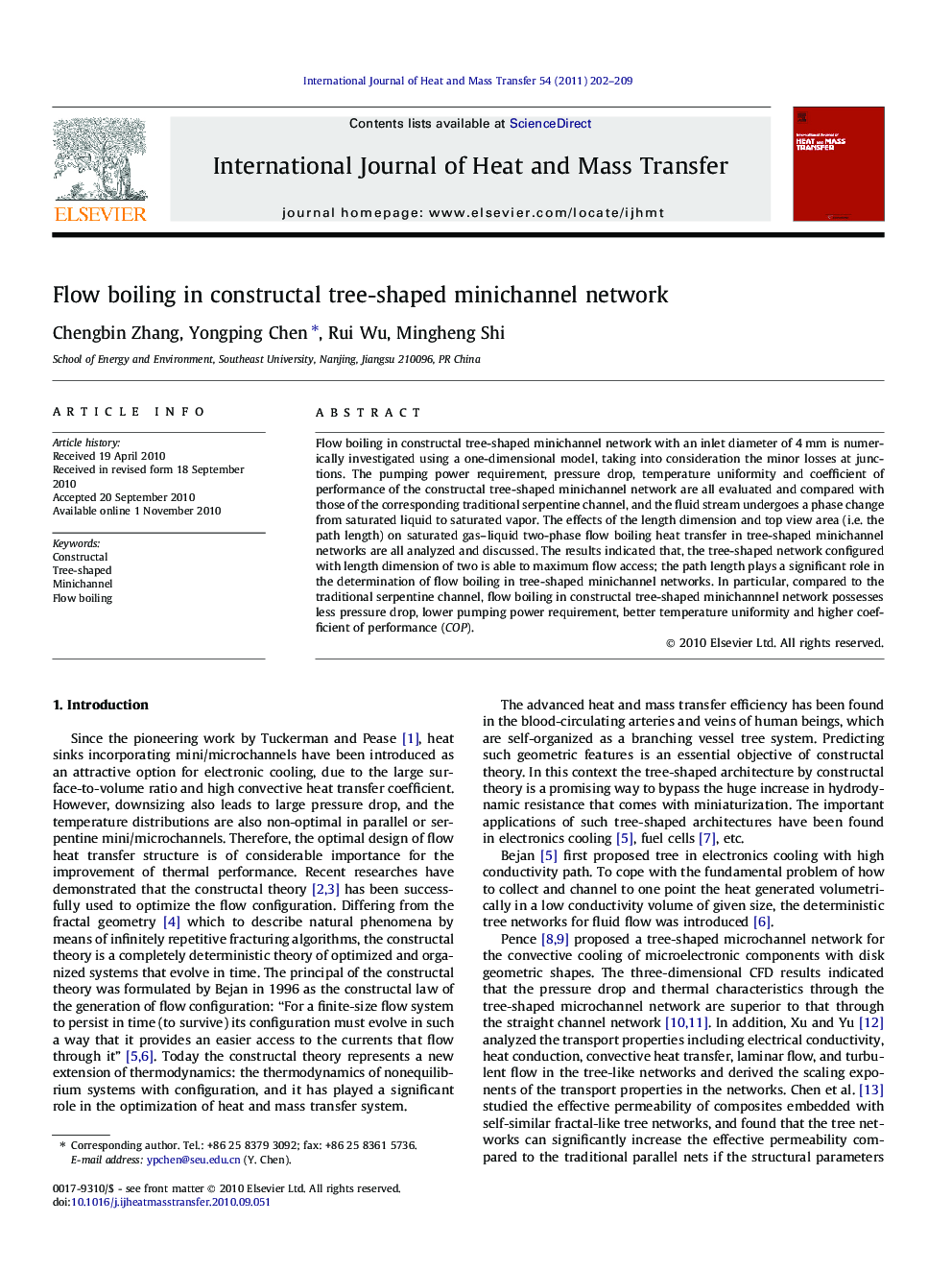| Article ID | Journal | Published Year | Pages | File Type |
|---|---|---|---|---|
| 660529 | International Journal of Heat and Mass Transfer | 2011 | 8 Pages |
Flow boiling in constructal tree-shaped minichannel network with an inlet diameter of 4 mm is numerically investigated using a one-dimensional model, taking into consideration the minor losses at junctions. The pumping power requirement, pressure drop, temperature uniformity and coefficient of performance of the constructal tree-shaped minichannel network are all evaluated and compared with those of the corresponding traditional serpentine channel, and the fluid stream undergoes a phase change from saturated liquid to saturated vapor. The effects of the length dimension and top view area (i.e. the path length) on saturated gas–liquid two-phase flow boiling heat transfer in tree-shaped minichannel networks are all analyzed and discussed. The results indicated that, the tree-shaped network configured with length dimension of two is able to maximum flow access; the path length plays a significant role in the determination of flow boiling in tree-shaped minichannel networks. In particular, compared to the traditional serpentine channel, flow boiling in constructal tree-shaped minichannnel network possesses less pressure drop, lower pumping power requirement, better temperature uniformity and higher coefficient of performance (COP).
